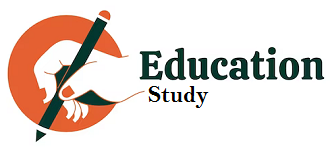Welcome to CaptainCours! That’s it, you’ve just been recruited as a private teacher! You have even been entrusted with a first lesson to give, in a few days, for a schoolboy in difficulty…but the satisfaction gives way to a certain apprehension…how to give this first lesson? How to organize? What posture to have? Do not panic ! We give you 10 tips to approach your private lessons with confidence!
1. Prepare for private lessons
It seems obvious, but it’s always good to remember: private lessons at home, it takes preparation! To do this, first consult the brief from the Head of Education received by email. It details the educational context, with the difficulties of the student, as well as the objectives of your support
2. The challenge of the first lesson: establishing a framework and a relationship of trust
You arrive at your first private lesson, you have prepared it well but yet you feel a small lump in the pit of your stomach. First of all, be well aware that if you have been recruited, it means that we think you have the corresponding profile, so you have our full confidence!
Concerning the course itself, it is first a question of establishing a relationship of trust with the student, to work in a fluid way then. Take a few minutes to chat with him, to get to know him.
3. Start from the existing
For this, it is important to keep in mind that a particular teacher starts from the existing one. Home school support is a school support job. Based on the lessons, the student’s copies, and with the background of the brief of the pedagogical manager, you must therefore establish objectives specific to the student’s needs.
4. Offer adjusted explanations
Sometimes the support course simply consists of going over the misunderstood notions with the student, calmly. You must then make sure that he is able to re-explain them and/or use them himself.
But it can also be interesting to use other tools. Thus, diagrams, more playful exercises, concrete experiences or explanatory videos can help understanding, by varying the course materials and by energizing it.
5. Propose appropriate learning methods
Depending on the learning profile of each student , it is a question of setting up methods that give him confidence, without sticking to a single method. Is the student more auditory? Orally explain the blocking points, encourage him to reformulate. Is it more visual? Develop review sheets or mental maps with him to check that he has learned his lesson well and that he knows how to make the link between the different concepts covered. Do not necessarily stick to a single method (you learn better by varying the channels), but use the one that gives the student confidence as soon as he has trouble understanding something that seems complex to him, for example.
6. Put the student in a situation
Once the theory is integrated and the notions are understood: time for exercises! Do not skimp on application exercises, in math in particular, gradually moving on to more complex exercises. Indeed, the stress of exams is a recurring blocking factor. To overcome the latter, it is advisable to put the student in an exam situation, with standard exercises and a given time to carry them out – after having sufficiently prepared him so that he can succeed in these exercises, of course.
7. Introduce breaks
Depending on their age, a child can stay focused on average between 20 and 40 minutes. However, a private lesson requires particularly sustained attention, insofar as the student is solicited throughout the course. Hence the importance of offering a few minutes break when you feel that the student is tired, to allow him to move, stretch his legs, hydrate and come back ready to start the second part of the session.
8. Conclude your session well for effective private lessons
The end of the session allows you to summarize the lessons learned from the course. Ask the student about what he has remembered, and set the objectives with him for the next time. You can also give him some exercises to do to deepen the methods worked. (But not too many exercises either, unless his teacher doesn’t give him work!)
9. From one session to another: ensuring continuity
Repetition , and in particular spaced repetition is essential in the learning process. Hence the importance of ensuring continuity in private lessons.
Thus, do not hesitate to start the course by questioning and testing the student on the concepts studied the previous time. This will make it possible to revive the concepts studied and to anchor them even more in his memory. In addition, it will help you to adjust the objectives of the session, possibly taking into account the new notions studied in class.
10. Questions? Difficulties ? Do not hesitate to communicate!
At CaptainCours, we place particular emphasis on communication. Your educational manager is there to support you! If you encounter a difficulty during your class hours, do not hesitate to turn to her. His pedagogical expertise will help you see things more clearly.

